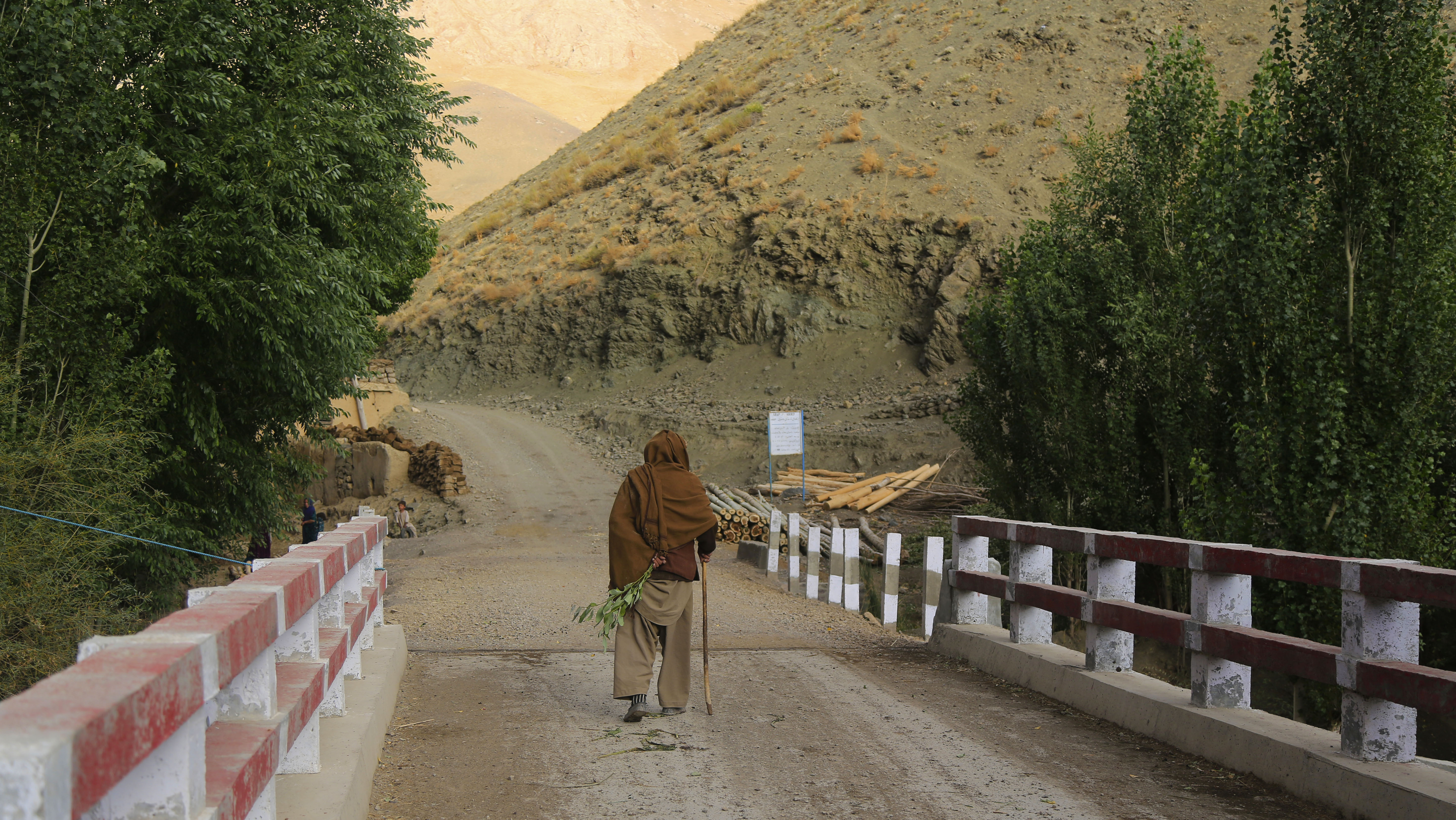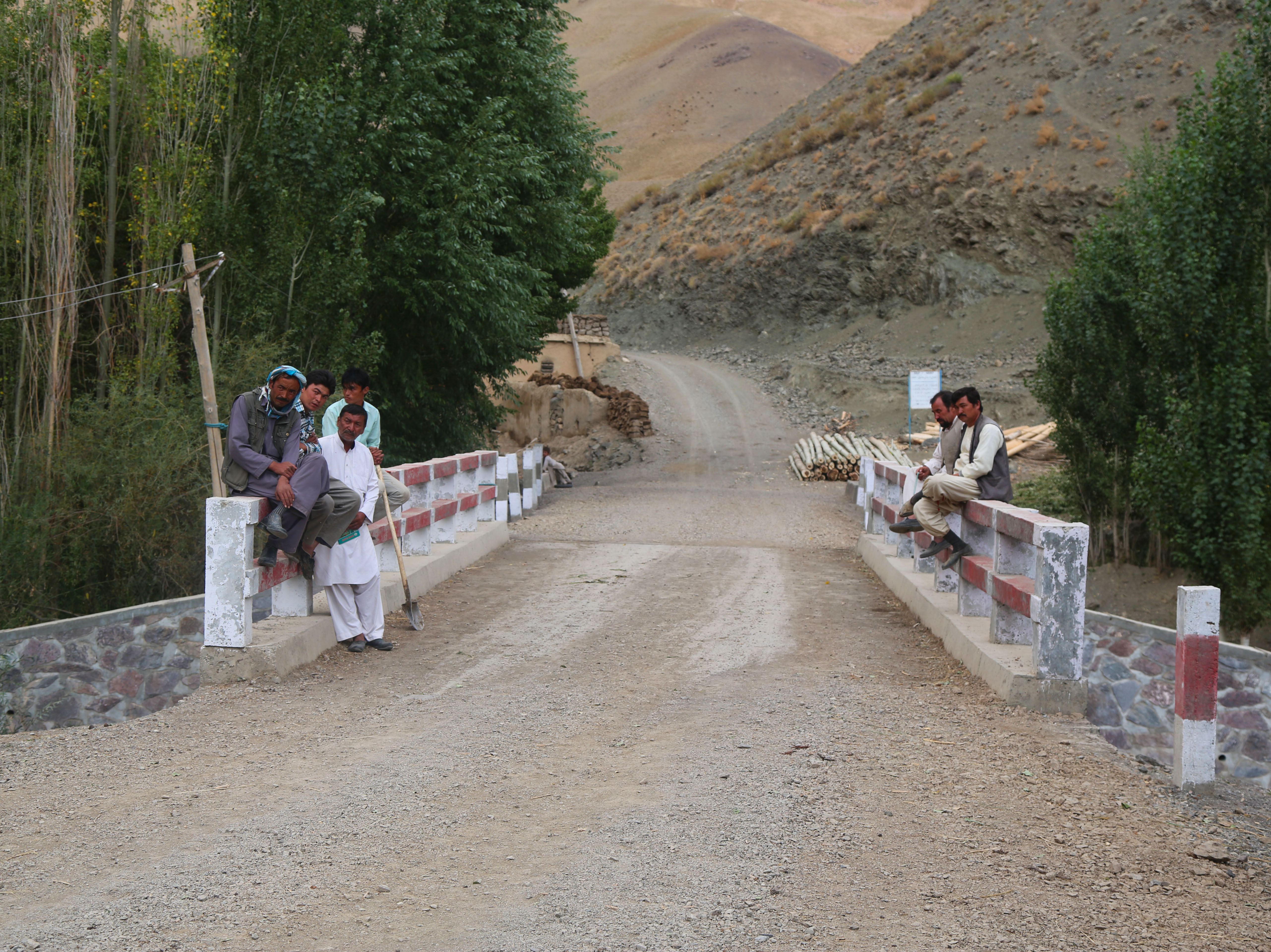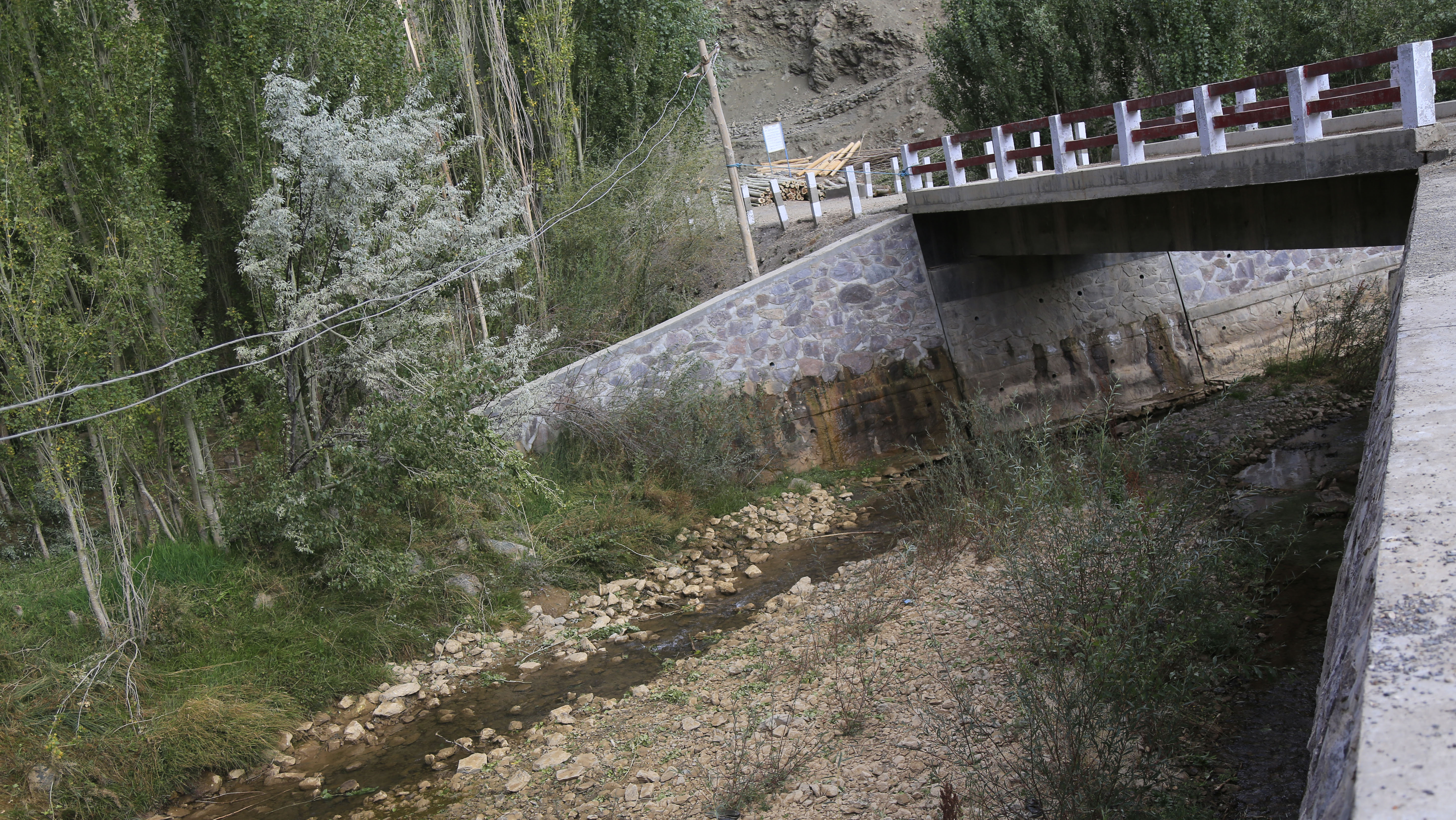PANJAB DISTRICT, Bamyan Province – The sun is setting and Ali who is exhausted and out of breath, has brought his herd of sheep back to the village from the pasture. He is taking them over the bridge to the other side of Kajabi village where he comes from.
The sturdy steel and concrete bridge unites the village and allows easy passage for livestock, vehicles, and pedestrians. Ali who is trying to separate his sheep from the other herds, is grateful that he can now herd his sheep safely and quickly across the river, which was not possible before. “Before this bridge existed, there were only two poles that served as a bridge that connected both sides of the village,” he recalls. “Both people and livestock faced numerous challenges and risks while crossing the wooden bridge.”
Funding support for the construction of the 12-meter-long and 5-meter-wide bridge was provided through the Afghanistan Rural Access Project (ARAP), under the Ministry of Rural Rehabilitation and Development (MRRD). The project aims to benefit rural communities across Afghanistan by improving access to basic services and facilities through all-weather roads.
Supported by the International Development Association (IDA), the World Bank Group’s fund for the poorest countries, and Afghanistan Reconstruction Trust Fund (ARTF), ARAP is a follow-on project of the National Rural Access Program (NRAP).
To date, construction of 732 kilometers of tertiary roads and 825 meters of tertiary bridges have been completed across Afghanistan. At the same time, maintenance of over 3,000 kilometers of tertiary roads and periodic maintenance of some 230 kilometers of tertiary roads have been carried out. Road maintenance work, to ensure that roads are kept in good condition, is one of the new sub-projects undertaken by ARAP.
The construction of the bridge, which began in December 2010, took a year. The Kajabi bridge and adjacent road are maintained through the MRRD’s maintenance program, with funding support from ARAP. Under the program, 100 meters of road were graveled on both sides of the bridge.
“Kajabi villagers now have easy access to markets,” says Sultani, an engineer in Bamyan Province. “Ever since we have completed our bridge project, many villagers, who had left the area for bigger cities, have come back to their village.”



